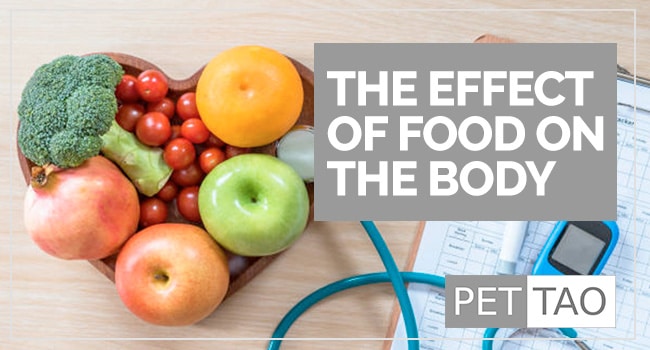“Let food be thy medicine and medicine be thy food.”
– Hippocrates
Food Energetics: Food as Medicine
Yes, Food energetics is an Eastern Medicine philosophy.
However, no one could be more exact about food and health than Hippocrates, the father of Western Medicine.
Despite Western culture ignoring his wisdom for many years, his quote on “food as medicine” has stood the test of time.
As a matter of fact, if you surf the internet for information on food, both human and pet, the majority of websites still acknowledge his ancient wisdom.
Fortunately for us and our pets, his concept of “food as medicine” has become more and more intertwined with Western culture than ever before.
Why?
Because as a society, we now realize the health implications of what we eat. We now realize that food is indeed medicine and a means of keeping us healthy.
But do we really consider the same for our pets?
We certainly should if we want to be our pets’ best health advocate.
After all, pets don’t have the privilege of researching options on the internet and then telling us which pet food best fits their needs.
As their owners, we have a huge responsibility.
Wisdom From Ancient People
For more than 3,500 years, in the tradition of Chinese culture, the concept of food as medicine and medicine as the food was important for survival as well as health.
Through observation, ancient scholars discovered that foods had predictable physiologic and metabolic effects on the body. They named these effects “food energetics.”
So, what observations led to their discovery of food energetics?
Initially, ancient scholars observed the human body and how it was affected by various stimuli such as food, herbs, and the environment.
Then, they observed how animals and fish behaved, how plants grew, and how they all interacted in natural environments.
For example, some fish live in the deepest, darkest, coolest depths of the lake; whereas, some fish live more toward the surface.
The fish at the bottom of the lake prefer cooler temperatures and are less active.
Conversely, the fish at the top of the water more towards the surface, prefer warmer temperatures, and are more active.
Can you guess which fish is energetically “cooling” and which fish is “warming?”
That’s right!
The fish at the bottom of the lake is cooling and the active, surface swimmers are warming.
Another example, in the plant kingdom, is the difference between lettuce and tomatoes.
Lettuce thrives and grows in shadier, cooler areas.
Tomatoes, on the other hand, need bright sunlight to grow and grow best in hot weather.
Can you guess which food is cooling and which is warming?
Yes! You are correct.
Lettuce is cooling and tomatoes are warming.
But, There’s More Than Just Hot Or Cold
There is an ancient Chinese Proverb that says: “He that takes medicine and neglects diet, wastes the skills of the physician.”
By feeding your pets according to the principles of food energetics and Food Therapy, you can easily influence your pet’s health, harmony, need for Western pharmaceuticals, and longevity.
In other words, no need for the physician nor the veterinarian.
Understand these food energetic principles:
- Every food has a specific energetic purpose either to warm the cold, cool the hot, or maintain neutral.
- TCVM sees health and well-being as a state of balanced energy.
- The energy of an animal is always changing because of diet, current health status, and life circumstances.
By understanding and applying the principles of food energetics and TCVM to your pet, you and your pet can benefit from the opportunities TCVM offers in promoting health and longevity.
Food Energetics and You
Food energetics are easily recognized in our everyday diets. In fact, we do it all the time without even knowing it.
For instance, on a hot summer day, do you prefer a habanero pepper or a hunk of watermelon?
A pepper heats your body, gets your blood pumping, and makes you sweat. Not something typically suited for a hot summer day.
Doesn’t watermelon sound delicious?
Watermelon cools the body and regulates heat. A perfect choice to remedy the withering heat.
Here are more examples.
Warming Foods Increase Metabolism and Energy
Examples of food energetics in warming foods include:
- Chicken
- Lamb
- Venison
- Ginger
- Red Pepper
- Pumpkin
- Squash
- White Rice.
These foods benefit geriatric arthritis, chronic IBD, and lack of energy.
Cooling Foods Calm the Body and Absorb Excess Heat
Examples of food energetics in cooling foods include:
- Duck
- Rabbit
- Fish
- Honey
- Apples
- Bananas
- Lettuce
These foods benefit pets that pant, have hot spots or allergies, and drink excessively.
Neutral Foods Alter Metabolism Very Slightly
Examples of food energetics in neutral foods include:
- Beef
- Potatoes
- Peas
- Carrots
- Green Beans
These foods maintain balance and health.
It is within individual food energetics PET | TAO is able to utilize their collective therapeutic benefits. Dr. Damron and I chose these principles to create better, healthier food for your pets.








